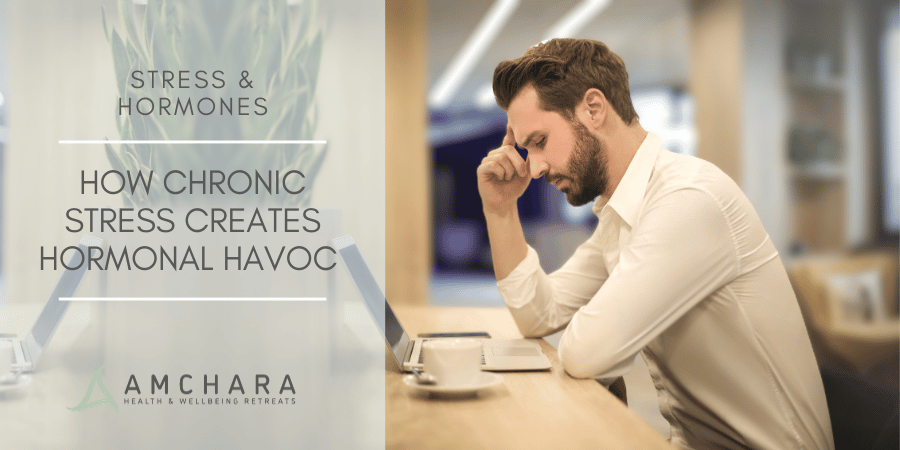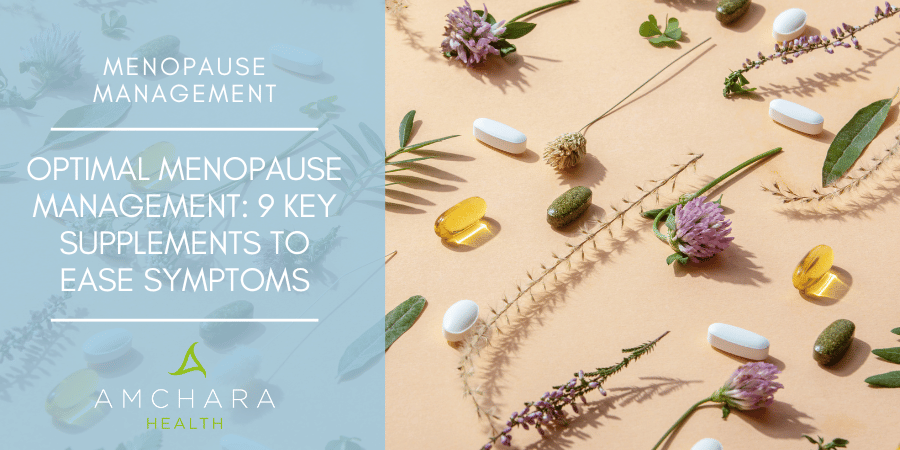Seed cycling involves eating different types of seeds at various times during the month to balance female hormones. Knowledge of the effect of the nutrients contained in the seeds determines at which point in the cycle they’re used.
We always take an evidence-based approach and in this article we’ll have a look at the theory behind seed cycling, the benefits of cycling your seeds and how to incorporate the practice into your daily life.
Your cycle and your hormones
To help understand the theory behind seed cycling, let’s have a look at how levels of your female hormones change over the course of your monthly cycle. We’ll also discover the symptoms you may experience when the balance of your hormones is disturbed.
Although the length of your menstrual cycle is unique to you, the average woman’s cycle lasts 28 days. Ovulation, the release of an egg, occurs on or around day 14. Many women will have significantly longer or shorter cycles than this. In fact, only around 10-15% of women experience cycles exactly 28 days in length.
The two major female hormones are oestrogen and progesterone; in women of menstruating age they both work in a delicate, co-ordinated synergy as levels naturally rise and fall throughout the month.
The first day of your period is considered to be day one of your cycle. At this time the levels of both oestrogen and progesterone will be low.
The first part of your cycle is the follicular phase, leading up to ovulation, and typically lasting around 14 days. Oestrogen increases, building up the womb lining to prepare for pregnancy. Meanwhile, the egg matures in readiness for ovulation. During this time, progesterone remains relatively low.
After ovulation, you enter the second half of your cycle, known as the luteal phase. Once an egg is released, the empty egg follicle which remains is transformed into a structure called the corpus luteum. This produces progesterone, with the role of maintaining the womb lining as progesterone will be needed to maintain pregnancy if the egg is fertilised. In this part of the cycle progesterone rises steadily, and oestrogen will also continue to increase.
If the egg is not fertilised, the levels of oestrogen and progesterone will drop, and your womb lining will shed, producing a menstrual period.
Because oestrogen and progesterone have different effects in the body, variations in their levels over the month can produce various symptoms, depending on the relative levels of the hormones.
Hormonal imbalance
Often, oestrogen levels climb too high during the luteal phase of the cycle. Although oestrogen is a necessary and useful hormone, if it becomes elevated relative to other hormones, problems can occur.
This rise can be a result of taking in environmental oestrogens from plastics, pollution and pesticides, known as xenoestrogens, which act as very strong oestrogens, pushing up the body’s levels. Oestrogen levels can also rise because the body is not able to excrete the used hormone quickly enough.
Another factor causing excess oestrogen is a relative lack of progesterone. Because both hormones have a close relationship, the problem is often not so much the absolute level of oestrogen, but its level compared to progesterone. Even a moderate amount of oestrogen can cause symptoms if progesterone becomes depleted. This situation is known as oestrogen dominance, and can be a factor in PMS, painful periods, heavy periods and irregular cycle length.
High oestrogen and low progesterone is much more common than the other way around.
Progesterone is particularly prone to depletion as a result of excessive stress.
To enable your body to react to stress, you need to produce the hormone cortisol. This hormone is manufactured from a substance derived from progesterone, so an increased need for cortisol will deplete progesterone levels. The body will prioritise the manufacture of stress hormones above others.
Another factor that can deplete progesterone is when ovulation doesn’t occur. Because progesterone is produced by the corpus luteum only after an egg is released, absence of ovulation means much less of the hormone will be produced. When women enter the years leading up to the menopause, the perimenopause, they tend not to ovulate each month.
All this means many women suffer from oestrogen dominance.
Phytoestrogens and hormone balance
Certain plant foods, including seeds, contain plant oestrogens, also known as phytoestrogens which can stimulate oestrogen receptors on cells.
Phytoestrogens are far weaker than the body’s own oestrogen. Just as xenoestrogens from plastics and pollutants are able to latch onto the body’s oestrogen receptors and, having a strong effect, can push oestrogen up to dangerously high levels, plant oestrogens have a balancing effect on oestrogen levels.
Because they act as weak oestrogens, phytoestrogens won’t push the body’s levels of oestrogen up too high. If oestrogen is already elevated, then by occupying some of the oestrogen receptors in the body, phytoestrogens can bring oestrogen down to a healthy level.
Benefits of seed cycling
The idea behind seed cycling is to balance oestrogen and progesterone towards their ideal levels, at different times in your cycle.
Seed cycling has been seen to reduce symptoms associated with PMS, such as menstrual cramps and premenstrual breast pain, as well as regulating cycle length and reducing the number of cycles without ovulation. Seed cycling is often practiced with a view to improving fertility.
Proponents of seed cycling suggest it can help manage the symptoms of conditions associated with hormonal imbalance, such as endometriosis and Polycystic Ovary Syndrome (PCOS).
Scientific research on seed cycling is scarce, but one study gave some women flax seed powder in addition to their normal food choices. These women were found to have fewer cycles without ovulation, along with lower oestrogen levels relative to progesterone than women who did not consume the flax seeds (1). Flax seeds have also been seen in other research to alleviate breast pain.
After the menopause, seed cycling is reported to help relieve hot flushes and night sweats as well as reducing mood swings.
In another study, eating flax seeds decreased menopausal symptoms and improved quality of life in post-menopausal women (2).
Benefits have been noted after only a few months of cycling seeds.
Seed cycling in practice
- The follicular phase
In the first half of your cycle, the idea is to regulate oestrogen in the pre-ovulatory phase by consuming certain phytoestrogens.
So during days 1-14, consume one tablespoon each of ground flax and pumpkin seeds every day. Both these seeds are high in phytoestrogens known as lignans. The omega-3 fatty acids contained in pumpkin seeds are anti-inflammatory.
Pumpkin seeds are also a great source of zinc, needed both for the development of the follicle and to produce a healthy levels of progesterone during the next stage of the cycle.
- The luteal phase
During the latter half of your cycle, starting immediately after ovulation, switch to one tablespoon each of freshly ground sunflower and sesame seeds per day. Continue until the first day of your next period, when the cycle starts again.
Eating these specific seeds is thought to regulate progesterone in the second half of the cycle, and prevent oestrogen dominance. Different types of lignans present in sesame seeds can act as weak oestrogens to prevent the hormone climbing too high during this phase (3).
The zinc and selenium contained in sesame seeds, as well as vitamin E from sunflower seeds, may boost progesterone levels.
If you have a 28-day cycle, your luteal phase will start on day 15.
Some women don’t ovulate exactly midway through their cycle. If this applies to you, and you know when you ovulate, start the second phase of seeds the day after ovulation.
If, like many women, your cycle length doesn’t conform to a 28 day pattern and you can’t tell when you ovulate, adapt the cycle to fit your own, splitting it into two equal halves.
Seed cycling in the menopause
Post-menopausal women who no longer have a menstrual cycle can still benefit from seed cycling. In this case, you can use the phases of the moon as a guide. The moon has a roughly 29 day cycle.
The new moon is considered to be day one, so start your cycle with flax and pumpkin seeds on this day. Then switch to sunflower and sesame seeds with the arrival of the full moon.
The digestive system and hormone balance
A healthy population of digestive bacteria is needed to effectively utilise phytoestrogens. Eating plenty of foods containing natural fibre and choosing fermented foods such as sauerkraut and kefir can support your gut bacteria.
It’s also a good idea to avoid sugar, alcohol and excess stress, which can all adversely affect your microbiome. In this way, you’ll maximise the benefits of seed cycling.
Ideas with seeds
Because the beneficial fats in seeds are easily destroyed by heating, it’s best to consume seeds raw rather than roasted. Use them ground as this increases the surface area available for absorption of nutrients. Any ground seeds should be stored in the fridge or freezer.
The beneficial oils they contain will rapidly break down with exposure to oxygen, so use freshly ground seeds and keep all seeds in an airtight container.
Enjoy seeds by sprinkling them onto muesli or salads, whizzed into smoothies, stirred into juice, or add them to chia pudding or yoghurt.
Takeaway
Seed cycling is a natural method of utilising the nutritional content of seeds strategically during your cycle, to help balance your hormones. It’s simple to do, so if you suffer from the symptoms of hormone imbalance, why not give seed cycling a try?
Of course there are many potential factors capable of influencing your hormone balance, including liver health, digestive health, the microbiome and stress levels. If you would like further support in your journey towards healthy balanced hormones, a consultation with an Amchara Personalised Health practitioner can explore your individual health status and history, including nutritional and lifestyle choices which may be impacting on your hormone balance. Functional testing can determine the levels of your hormones throughout your cycle using a simple urine test.
We’re dedicated to providing you with both insightful information and evidence-based content, all orientated towards the Personalised Health approach.
Did you find this article useful?
We would love to know your thoughts.
Have you tried seed cycling?
Do you have any tips to help others?
Read this next:




